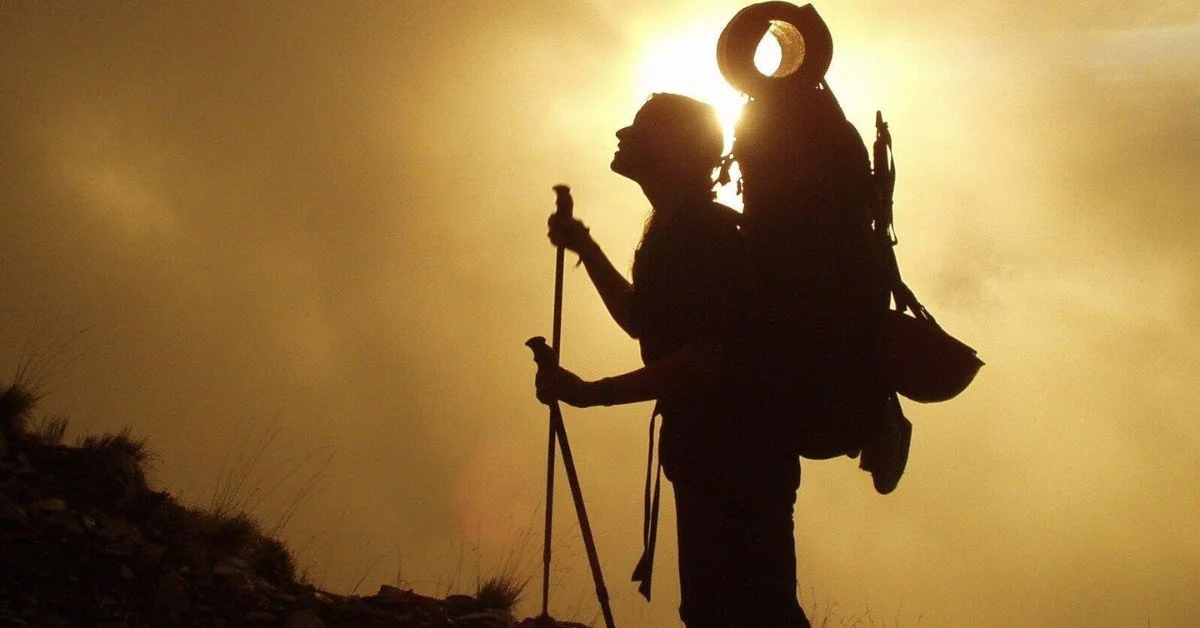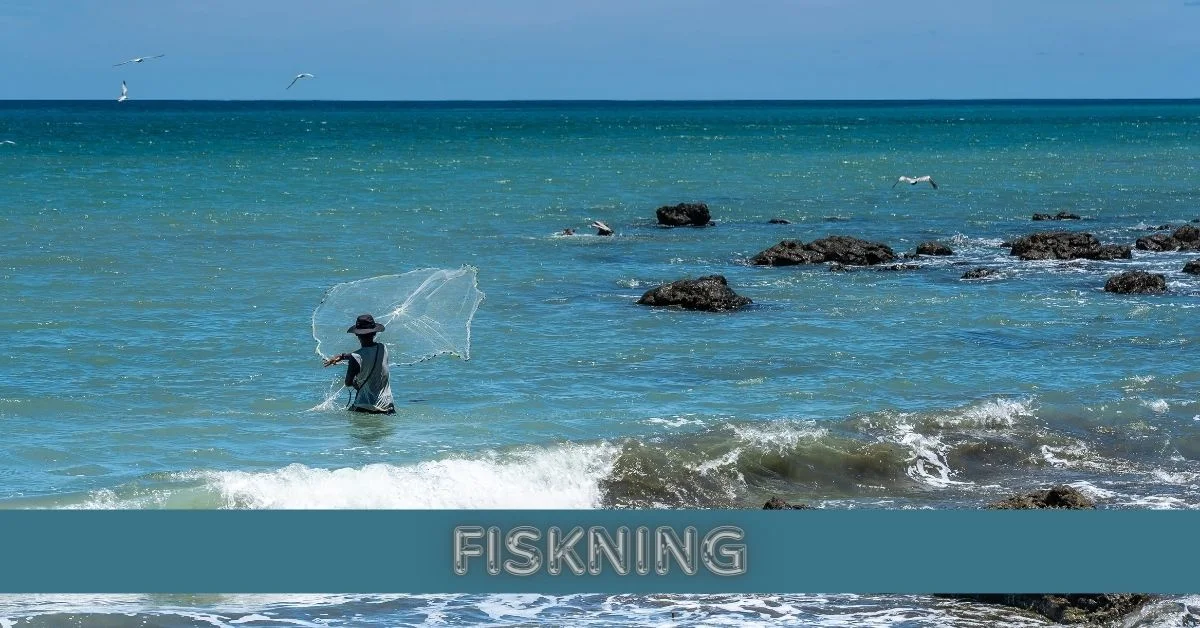GENERAL
Capturing the Beauty of Nature: Tips for Stunning Hiking Photography

Nature is a source of endless inspiration for photographers. It is the perfect subject to capture with your camera. Hiking is one of the best ways to immerse yourself in nature and get those breathtaking shots that will make your photography stand out.
But, capturing stunning photos while hiking can be challenging. You have limited time, changing lighting conditions, and unpredictable weather to deal with. However, with some preparation and the right techniques, you can take your hiking photography to the next level.
Plan Your Hike
Before embarking on your hike, it’s important to plan out your route and research the area you will be exploring. This will give you an idea of the types of scenery and landscapes you can expect to encounter, allowing you to prepare the necessary equipment and camera settings.
Pack Light and Smart
Hiking can be physically demanding, so it’s important to pack light and smart. This means carrying only the essential photography gear that you will need for your specific hike. This can include:
Camera Gear
To capture the best shots of nature, you will need a camera that allows for manual settings. This can be a DSLR camera or a mirrorless camera. It’s also recommended to bring along extra batteries and memory cards.
Lenses
When it comes to lenses for hiking photography, versatility is key. A wide-angle lens is great for capturing sweeping landscapes, while a telephoto lens is ideal for capturing wildlife and details from a distance.
If you’re in a location like Nairobi, you may be able to find quality SLR lenses in Nairobi stores for your photography needs.
Tripod
A sturdy tripod is essential for long exposure shots, such as waterfalls or starry skies. It also helps to stabilize your camera for sharper images, especially in low light conditions.
Timing is Everything
The best lighting for photos for hiking photography is during the golden hours – an hour after sunrise and an hour before sunset. During this time, the light is soft and warm, casting a beautiful glow on the landscape. This is also when shadows are long, adding depth to your photos.
Use Composition Techniques
Composition is key in any type of photography, but it’s especially important in hiking photography where you want to capture the vastness and beauty of nature. Here are some techniques to keep in mind:
Rule of Thirds
Divide your frame into thirds both horizontally and vertically, and place the subject at one of the intersecting points. This creates a more visually interesting photo.
Leading Lines
Use natural elements such as paths, rivers, or tree branches to lead the viewer’s eye toward the focal point of your photo. This creates a sense of depth and draws the viewer into the scene.
Foreground, Middle Ground, and Background
Including elements in the foreground, middle ground, and background adds depth and dimension to your photos. This can be anything from a person, animal, or object that gives context to the vastness of nature. Experiment with different angles to showcase these layers.
Get Creative with Perspectives
Don’t be afraid to get down low or climb up high to capture unique perspectives of nature. This can mean kneeling to capture a flower at eye level or climbing a rock to capture a sweeping view from above. Play around with different angles and perspectives to add interest to your photos.
Capture Movement
Nature is constantly in motion, whether it’s a flowing river or rustling leaves. Use slow shutter speeds to capture the movement and add a sense of dynamism to your photos. This can also create dreamy effects in landscape shots.
Try HDR Photography
High Dynamic Range (HDR) photography involves taking multiple photos at different exposures and combining them to create one well-exposed image. This is especially useful when photographing landscapes with extreme contrasts in lighting, such as a bright sky and dark foreground. HDR can help bring out details in both the highlights and shadows.
Panoramic Shots
Capture the grandeur of nature by taking panoramic shots. This can be done by using a wide-angle lens and taking multiple photos that overlap, then stitching them together in post-processing. Panoramic shots are great for capturing vast landscapes such as mountains or deserts.
Macro Photography
Don’t forget to capture the smaller details of nature. Macro photography allows you to get up close and personal with subjects such as flowers, insects, and textures. This can add a unique perspective to your hiking photos.
Post-Processing
Post-processing can help enhance and bring out the best in your hiking photos. Experiment with different editing techniques to create a unique style that showcases your vision of nature’s beauty.
Protect Your Gear and the Environment
As a hiker, it’s important to protect your photography gear. Here are some tips to keep in mind:
Camera Bag or Protective Case
Invest in a camera bag or protective case that is lightweight and weather-resistant. This will not only protect your gear from the elements but also make it easier to carry during your hike.
Rain Cover for Your Camera
If you’re expecting rain or snow, be sure to bring a rain cover for your camera to protect it from moisture. Alternatively, you can use a plastic bag as a makeshift cover.
Lens Filters
Lens filters not only enhance the quality of your photos but also act as a protective barrier for your lenses. Consider investing in a UV or polarizing filter for your hiking photography.
Be Patient and Stay Aware
Nature is unpredictable, and sometimes you may have to wait for the perfect shot. Be patient and stay aware of your surroundings – you never know when a beautiful moment will present itself.
Leave No Trace
As hikers and photographers, it’s important to leave no trace and minimize our impact on the environment. Be respectful of nature and follow the principles of “Leave No Trace” to preserve its beauty for future generations.
Review and Learn
After your hike, take some time to review and learn from your photos. What worked well? What could be improved? This will not only help you improve as a photographer but also allow you to appreciate the beauty of nature through a different lens.
Try Hiking Photography Now
Hiking photography is a rewarding experience that allows us to capture the natural wonders around us. With this outdoor photography guide, you can take stunning photos that truly capture the beauty of nature and inspire others to explore and appreciate it.
Remember to always respect nature, be patient, and have fun on your photography adventures! Happy hiking!
Is this article helpful? Keep reading our blog for more.
GENERAL
Fiskning: Sustainability and Tradition in Fishing

Introduction to Fiskning
Fiskning, the art of fishing, is more than just a pastime—it’s a rich tapestry woven from history, culture, and nature. As people gather by riversides or cast lines into the ocean’s depths, they engage in an age-old practice that connects them to their ancestors and the environment. This blend of tradition and sustainability defines fiskning in profound ways. In our fast-paced world where modern techniques often overshadow time-honored methods, understanding the essence of fiskning becomes crucial. Join us as we explore its heritage and discuss how these practices can harmonize with contemporary fishing for future generations to cherish.
The History and Tradition of Fiskning
Fiskning has deep roots in many cultures, symbolizing a bond between people and nature. This ancient practice dates back thousands of years when communities relied on fishing for sustenance.
Traditionally, each region developed unique techniques and tools based on local fish species and environmental conditions. From handlines to nets, these methods reflect creativity shaped by necessity.
In Scandinavia, for example, the art of fiskning remains tied to cultural heritage. Fishermen often share stories passed down through generations while out at sea or along riverbanks.
Rituals surrounding fishing also play an essential role in community life. Celebrations mark the opening of seasons with gatherings that honor both tradition and nature’s bounty.
Such customs create a sense of belonging among those who partake in this time-honored activity, reinforcing the lasting significance of fiskning across generations.
The Importance of Sustainability in Fishing
Sustainability in fishing is more than a trend; it’s a necessity. As global populations rise, the demand for seafood increases. This pressure often leads to overfishing, threatening fish stocks and aquatic ecosystems.
Healthy oceans are vital not just for marine life but also for humanity. They regulate climate, provide oxygen, and support livelihoods around the world. When fishing practices damage these delicate environments, we jeopardize future generations’ access to resources.
Implementing sustainable methods helps balance ecological health with economic needs. Practices like catch limits and habitat protection ensure that fishing can continue without depleting essential species.
Focusing on sustainability fosters biodiversity too. A rich variety of fish means healthier waters and stronger communities reliant on these ecosystems. Sustainable fishing isn’t just about today; it’s about securing tomorrow’s food supply while respecting nature’s intricate web of life.
Sustainable Practices in Fiskning
Sustainable practices in fiskning are vital for ensuring healthy fish populations and thriving ecosystems. Fishermen often rely on traditional methods that have been passed down through generations, emphasizing respect for nature.
Many utilize selective fishing techniques. This approach minimizes bycatch and allows juvenile fish to grow before being harvested. It’s a win-win situation: the fishermen protect their future catch while maintaining ecological balance.
Another key practice is seasonal fishing. By aligning harvests with breeding seasons, communities help replenish stock levels naturally. This method supports not just the local economy but also the environment.
Additionally, some fisherfolk engage in habitat restoration projects, like reef building or planting aquatic vegetation. These efforts create shelter and food sources for marine life, promoting biodiversity within the waters they depend upon.
Embracing these sustainable practices ensures that fiskning remains a viable tradition while safeguarding resources for years to come.
Benefits and Challenges of Maintaining Traditional Fishing Methods
Traditional fishing methods offer numerous benefits that go beyond mere sustenance. They foster a deep connection between communities and their environment. Many of these techniques have been passed down through generations, carrying rich cultural significance. This heritage not only reinforces community ties but also preserves local knowledge.
However, maintaining these practices comes with challenges. Modern pressures like overfishing and climate change threaten the ecosystems where traditional fishing flourishes. As fish populations dwindle, reliance on age-old methods can sometimes clash with contemporary demand for efficiency and profit.
Adapting to new realities while honoring tradition is tricky. Fishermen often find themselves at a crossroads, balancing respect for inherited wisdom with the need for sustainable innovation. Navigating this delicate path is essential for ensuring that both culture and ecology endure in harmony.
Incorporating Fiskning into Modern Fishing Practices
Incorporating fiskning into modern fishing practices requires a balance between tradition and innovation. Fishermen can adopt techniques passed down through generations while embracing new technologies.
One way to blend these approaches is by using eco-friendly gear that reduces environmental impact. For example, biodegradable nets could replace harmful plastics, preserving aquatic ecosystems.
Education plays a crucial role as well. Workshops can teach younger generations about traditional methods alongside contemporary strategies. Knowledge sharing strengthens community bonds and fosters respect for both the craft and nature.
Utilizing data-driven tools like fish finders or GPS technology helps fishermen improve their catch efficiency without compromising sustainability. This synergy of old and new enriches the fishing experience.
Community involvement is essential in promoting sustainable practices too. Local initiatives can encourage shared responsibility for maintaining water quality and habitats critical to both traditional fiskning and modern fishing efforts.
Conclusion: Preserving the Legacy of Fiskning for Future Generations
Fiskning is more than just a method of fishing; it’s a cultural heritage that connects communities with their natural resources. As we navigate the complexities of modern life, it’s crucial to preserve the essence of fiskning. This practice embodies sustainability and tradition, teaching future generations respect for nature.
The legacy of fiskning lies in its ability to adapt while maintaining its core values. By embracing sustainable practices and integrating them into contemporary fishing methods, we can ensure this tradition thrives. Communities must come together to share knowledge and techniques passed down through generations, preserving not only fish stocks but also the stories behind each catch.
Emphasizing education around traditional fishing methods fosters appreciation among younger generations. It empowers them to understand ecological balance while honoring age-old customs.
As we look ahead, there is an opportunity—an obligation—to cherish and uphold the spirit of fiskning. Through conscious effort and commitment, we can safeguard this vital part of our cultural identity for years to come.
ALSO READ: The Ultimate Guide to Fishing Boat Decals: Personalizing Your Vessel
FAQs
What is “fiskning”?
Fiskning is the traditional art of fishing that blends cultural heritage with sustainable practices. It connects communities to nature through time-honored techniques and respectful harvesting.
Why is sustainability important in fiskning?
Sustainability ensures fish populations remain healthy, ecosystems thrive, and future generations can continue this cultural practice without depleting resources.
How does fiskning differ from modern fishing?
Fiskning emphasizes respect for nature and often uses selective, low-impact techniques, while modern fishing may prioritize efficiency, sometimes at the expense of ecological balance.
Can traditional methods keep up with modern fishing needs?
Yes, when paired with innovative tools and community efforts, traditional methods can support sustainable fishing while preserving cultural values.
What are examples of sustainable fiskning practices?
Examples include seasonal fishing, using selective gear to reduce bycatch, and participating in habitat restoration like reef or vegetation rebuilding.
GENERAL
Cyanová: Redefining Design with a Purpose

Introduction to Cyanová
In a world where design often feels disconnected from purpose, Cyanová emerges as a beacon of innovation. This brand isn’t just about creating beautiful products; it’s about weaving meaning into every stitch and curve. With an unwavering commitment to sustainability and ethics, Cyanová reshapes the landscape of modern design. Whether you’re searching for unique home decor or fashion pieces that tell a story, this brand invites you to rethink what it means to choose consciously. As we dive deeper into the inspiration behind Cyanová, you’ll discover how this visionary company is making waves in both aesthetics and impact.
The Inspiration Behind the Brand
Cyanová draws its essence from the beauty of nature and the stories embedded in diverse cultures. Each design reflects a deep appreciation for craftsmanship, tradition, and innovation.
The founders traveled extensively, immersing themselves in local customs and artistic expressions. They wanted to create something that resonates on multiple levels—emotionally, aesthetically, and ethically.
This journey led to an understanding that design can serve as a bridge between people and their environment. Every piece tells a story—a narrative woven into fabrics or sculpted into forms.
Cyanová’s mission is rooted in creating not just products but meaningful experiences. The brand seeks to inspire individuals by connecting them with artful creations that celebrate both heritage and contemporary ideals.
Sustainability and Ethical Practices in Design
Cyanová champions sustainability by integrating eco-friendly materials into every aspect of its design process. Each product reflects a commitment to reducing environmental impact, making conscious choices that resonate with environmentally aware consumers.
The brand prioritizes ethical sourcing, ensuring that all components are obtained responsibly. By collaborating with local artisans and suppliers, Cyanová supports communities while minimizing carbon footprints.
Waste reduction is another cornerstone of their philosophy. Innovative techniques turn offcuts and excess materials into beautiful new products. This not only curtails waste but also sparks creativity in the design process.
Transparency plays a vital role in Cyanová’s ethos. Customers can trace the journey of each item from conception to completion, fostering trust and accountability within the brand community.
By marrying aesthetics with ethics, Cyanová sets a new standard for responsible design that’s as appealing as it is purposeful.
Impactful Collaborations and Projects
Cyanová thrives on collaboration, believing that great design is a team effort. This ethos has led to partnerships with talented artisans and innovative brands across various industries.
Projects like the “Eco-Home Initiative” showcase their commitment to sustainable living. By joining forces with environmental organizations, Cyanová develops products that not only look good but also promote eco-conscious lifestyles.
Moreover, collaborations with emerging designers bring fresh perspectives into their collections. Each partnership ignites creativity and pushes boundaries in design.
The brand’s involvement in community-driven projects further emphasizes its mission. Workshops and events foster local talent while raising awareness about sustainability issues.
With every collaboration, Cyanová amplifies its impact—transforming spaces and inspiring change through thoughtful designs that resonate deeply with consumers.
Unique Designs and Products Offered by Cyanová
Cyanová stands out with its distinctive range of products that marry form and function. Each piece is a testament to thoughtful design, reflecting the brand’s commitment to creativity.
From elegant home decor to innovative furniture solutions, every item showcases unique materials and textures. The designs often incorporate organic shapes that invite interaction and evoke emotion.
Textiles play a significant role in Cyanová’s offerings. Handcrafted fabrics are not just visually stunning; they also tell stories of craftsmanship rooted in tradition.
Lighting solutions from Cyanová illuminate spaces while making artistic statements. These fixtures blend modern aesthetics with sustainable practices, creating ambient environments that inspire tranquility.
Accessories add splashes of color and personality to any setting. They serve as conversation starters, effortlessly bridging style with purpose through their eco-conscious production methods.
Future Goals and Expansion Plans for the Brand
Cyanová is on a mission to broaden its horizons. The brand aims to introduce innovative product lines that resonate with its core values of sustainability and purpose-driven design.
Future plans include expanding into new markets, allowing more people access to their unique creations. Cyanová’s vision includes collaborations with local artisans worldwide, enhancing cultural diversity in their offerings.
Additionally, the brand is committed to increasing transparency in its supply chain. This initiative will bolster consumer trust while showcasing ethical production methods.
An exciting goal for Cyanová is to launch educational workshops focused on sustainable design practices. These programs will inspire others and foster a community dedicated to conscious living.
As they grow, Cyanová remains steadfast in creating products that not only look good but also make a positive impact on the world around us. The journey ahead promises innovation infused with responsibility at every turn.
Conclusion: Empowering Change Through Design with Cyanová
Cyanová is more than just a brand; it’s a movement towards meaningful design. With a focus on sustainability and ethical practices, it challenges the status quo of conventional design. The inspiration behind each product tells a story that resonates with consumers who seek purpose in their purchases.
Collaborations have amplified Cyanová’s impact, bringing together creative minds to tackle pressing global issues through innovative projects. This commitment to social responsibility sets the brand apart in an industry often driven by profit alone.
The unique designs offered by Cyanová reflect not only aesthetic appeal but also functionality and ecological mindfulness. Each piece serves as a reminder of what can be achieved when creativity meets conscience.
Looking ahead, Cyanová has ambitious plans for expansion while remaining true to its core values. As they continue to innovate and inspire change, they pave new pathways for future designers and consumers alike.
Through its dedication to empowering positive change, Cyanová stands at the forefront of a design revolution that encourages us all to consider our choices—both in style and sustainability.
ALSO READ: Interior Painting Ideas to Ignite Creativity in Your Home Office
FAQs
What is “Cyanová”?
Cyanová is a design-focused brand that combines sustainability, cultural storytelling, and artistic craftsmanship to create ethical, purposeful products in home decor, fashion, and more.
How does Cyanová incorporate sustainability in its products?
Cyanová uses eco-friendly materials, minimizes waste, and collaborates with ethical suppliers to ensure environmentally responsible design throughout every stage of production.
What makes Cyanová’s design approach unique?
Each Cyanová piece merges aesthetics with meaning—drawing from nature, cultural heritage, and handcrafted techniques to deliver designs that tell a story and inspire connection.
Does Cyanová support local communities or artisans?
Yes, Cyanová partners with local artisans and communities around the world, empowering them through collaborative design, fair trade practices, and visibility in global markets.
What are Cyanová’s future goals?
Cyanová plans to expand globally, launch sustainable design workshops, enhance supply chain transparency, and continue innovating with new product lines rooted in ethics and artistry.
GENERAL
Understanding Evırı: A Unique Cultural Phenomenon

In a world brimming with diverse traditions and unexplored heritage, there are hidden gems that defy easy definition—Evırı is one such phenomenon. Mysterious, rich in meaning, and rooted in both community and symbolism, Evırı is far more than a passing trend or a regional pastime. It’s a living, breathing cultural expression that tells stories, preserves identity, and brings people together in unexpected ways. Whether you’ve stumbled across the term or are on a quest to learn more, this exploration will guide you through the heart of Evırı and why it’s becoming a subject of fascination for cultural enthusiasts worldwide.
What Is Evırı?
At its core, Evırı represents a multifaceted cultural tradition that blends art, community values, and generational wisdom. Though its exact origin may vary by region or community, the term typically refers to a symbolic practice or ritual embedded in local folklore and social customs. It could be expressed through storytelling, music, dance, or even craftwork, depending on the cultural context.
Unlike mainstream traditions with clearly documented origins, Evırı thrives on oral history. It’s passed down not just in words but in movements, emotions, and shared experiences. It’s not something easily found in textbooks—it lives in the rhythm of festivals, in whispered legends, and in the passionate expressions of those who carry its legacy.
Origins Rooted in Tradition
The origins of Evırı can be traced back to ancient communal life—where storytelling, collective rituals, and symbolic practices served as essential tools for survival, identity, and social cohesion. In many cultures, Evırı was (and still is) used to mark life events such as births, marriages, harvests, and even seasonal transitions.
These ceremonies or performances weren’t merely entertainment—they were deeply spiritual, often used to invoke blessings, preserve local myths, or pass on critical values. Each act of Evırı was a moment of connection: between the people and the land, between generations, and between past and present.
Evırı as a Living Art Form
Today, Evırı continues to evolve, especially in communities that strive to retain their cultural identity in an increasingly globalized world. You might encounter Evırı in a rural village in the form of a dance led by elders, or in a modern city through a theatrical reenactment during cultural festivals.
Its art form may take different shapes, but its essence remains: authenticity, expression, and unity. In some regions, artisans create detailed tapestries or costumes tied to Evırı traditions, while in others, musicians keep the spirit alive with ancestral instruments and hauntingly beautiful melodies.
There’s plenty more where that came from—browse our other helpful content!
The Role of Evırı in Community and Identity
One of the most powerful aspects of Evırı is its ability to foster belonging. Unlike more individualistic cultural expressions, Evırı is inherently communal. It invites participation, whether through dance, song, crafting, or storytelling. No one is an outsider when Evırı’s is being celebrated.
It has become a rite of passage for many youths to learn the rituals of Evırı’s from their elders, thereby ensuring that the customs are not lost to time. In this way, it becomes a vessel for language preservation, moral instruction, and emotional healing—particularly in communities that have faced displacement or cultural erosion.
Why the World Is Paying Attention to Evırı
In recent years, Evırı’s has started gaining attention beyond its traditional borders. Cultural anthropologists, documentarians, and even social media influencers are turning their gaze toward this captivating tradition. But why now?
Perhaps it’s the growing global hunger for authenticity in a world flooded with digital noise. Or maybe it’s the increasing recognition of indigenous and lesser-known cultures as invaluable reservoirs of wisdom. Regardless, Evırı offers something deeply human—a chance to pause, reflect, and connect.
It’s also inspiring a new generation of creators. Filmmakers are using Evırı’s-inspired themes in their stories, fashion designers are borrowing motifs from Evırı art, and educators are designing curricula that include its principles to teach empathy and cultural respect.
Challenges in Preserving Evırı
Like many cultural treasures, Evırı faces challenges. As younger generations move to cities or become disconnected from their roots, the risk of cultural dilution increases. Globalization, while offering visibility, also brings the danger of commercialization or misrepresentation.
Additionally, without adequate documentation, much of Evırı’s remains at risk of being forgotten. Efforts are being made by local historians and community leaders to archive stories, record performances, and even digitize rituals for future generations. However, the process is slow and often underfunded.
A Glimpse Into the Future of Evırı
Despite the hurdles, the future of Evırı looks promising—thanks to a growing number of cultural revival movements. Communities are increasingly using digital platforms to showcase their traditions, while also building bridges with other cultural groups facing similar struggles.
Workshops, festivals, and youth programs centered around Evırı’s are sparking renewed interest. In schools, children are learning songs or dances tied to their heritage. In cities, cultural nights are celebrating Evırı alongside other world traditions, creating a rich tapestry of global unity.
Moreover, technology is becoming an ally. Augmented reality apps, virtual museums, and online forums are allowing younger generations to engage with Evırı’s in new, interactive ways—making the old beautifully relevant again.
Final Thoughts: Why Evırı Matters
Evırı isn’t just a tradition—it’s a reflection of human spirit and creativity. It’s proof that culture doesn’t have to fade with time; it can adapt, grow, and inspire across borders. In a time when the world feels increasingly divided, Evırı’s reminds us of our shared need for connection, storytelling, and purpose.
By embracing Evırı’s, we don’t just preserve a piece of history—we ignite something powerful in ourselves: a curiosity to learn, a desire to connect, and a responsibility to honor the voices of those who came before us.
Evırı is more than a word. It’s a window into a world where culture lives, breathes, and belongs to everyone.
Loved this post? You’ll find even more just like it on our blog!

 ENTERTAINMENT3 weeks ago
ENTERTAINMENT3 weeks agoExploring the Kristen Archives: A Treasure Trove of Erotica and More

 LIFESTYLE9 months ago
LIFESTYLE9 months agoThe Disciplinary Wives Club: Spanking for Love, Not Punishment

 GENERAL4 months ago
GENERAL4 months ago5 Factors That Affect Tattoo Removal Success

 TECHNOLOGY8 months ago
TECHNOLOGY8 months agoBlog Arcy Art: Where Architecture Meets Art

 LIFESTYLE2 months ago
LIFESTYLE2 months agoWho Is Sandra Orlow?

 HEALTH8 months ago
HEALTH8 months agoHappy Hippo Kratom Reviews: Read Before You Buy!

 GENERAL4 weeks ago
GENERAL4 weeks agoEverything About King Von Autopsy Report Details

 ENTERTAINMENT10 months ago
ENTERTAINMENT10 months agoThe Ultimate Guide to Shillong Teer Hit Number: How to Predict Your Next Win










